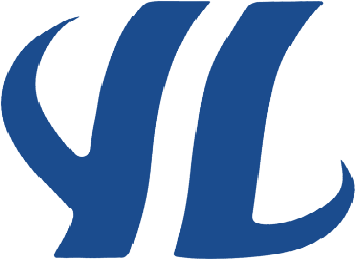
Types of surface treatment processes for aluminum alloy profiles
Published:
Apr 27,2020
1. The pretreatment process of aluminum alloy anodizing is an important link to determine the appearance quality of the product. Various quality requirements such as the removal of profile mechanical grain, sanding, matt, and gloss are determined by the pretreatment process. The traditional pretreatment process is divided into three types:
1. The pretreatment process of aluminum alloy anodizing is an important link to determine the appearance quality of the product. Various quality requirements such as the removal of profile mechanical grain, sanding, matt, and gloss are determined by the pretreatment process. The traditional pretreatment process is divided into three types:
(1) Alkaline etching process: it consists of degreasing → washing → alkali etching → washing → washing → lighting → washing → washing → oxidation, that is, after degreasing, the profile is processed by alkaline etching in the alkaline etching tank to remove mechanical grain and natural Oxidation film, sand, and then remove the black ash on the surface through the light outlet, you can perform anodizing. The core process of this process is alkaline etching. The surface flatness of the profile and the quality of sanding are determined by this process. In order to achieve the purpose of leveling the mechanical grain, it usually takes 12-15 minutes for alkali etching, aluminum consumption reaches 40-50Kg / T, and alkali consumption reaches 50Kg / T. Such high aluminum consumption not only wastes resources, but also brings serious environmental problems, increasing the cost of wastewater treatment. This process has been used for more than 100 years, and most of the aluminum manufacturers in the world have been using it until now. It has not been gradually replaced by acid etching until nearly two years ago.
(2) Acid etching process: it consists of degreasing → water washing → acid etching → water washing → water washing → alkaline etching → water washing → water washing → luminescence → water washing → water washing → oxidation. After degreasing, the profile is acid etched first, then alkali etched, and light is emitted, and the pretreatment is completed. The core process of this process is acid etching, and the removal of mechanical grains and sanding is determined by acid etching. Unlike alkaline etching, the biggest advantages of acid etching are its strong ability to remove mechanical grains, quick sanding and low aluminum consumption. It can be completed in 3-5 minutes. The aluminum consumption is almost 1 / 8-1 / 6 of alkaline etching. From the perspective of work efficiency and resource conservation, acid etching is undoubtedly a major progress in the alkaline etching process. However, the environmental protection problem of acid etching is more prominent: the escape of the toxic gas HF in the acid tank and the pollution of the water washing tank Fˉ. Fluoride compounds are generally highly toxic and are more difficult to handle. In addition, after the acid etching treatment, the appearance of the profile is darkened. Although it has to continue the alkali etching and light emission, it can be brightened, but it is still very dark. Both the process and the gloss are lost. solution.
(3) Polishing process: it consists of degreasing → washing → polishing → washing → washing. The profiles are put into the polishing tank after degreasing. After 2-5 minutes of polishing, the mirror surface can be formed, which can be directly oxidized after washing. The core process of this process is polishing, and the grain removal and mirror surface are all completed in the polishing tank. Polishing has the advantages of low aluminum consumption and bright profiles. However, the escape of NOx from the polishing tank causes serious environmental pollution and physical injury to operators. At the same time, the cost of expensive chemical raw materials and other factors also restrict the promotion of this process. Looking at the above three processes, although each has its own characteristics, its shortcomings are also more prominent, such as high consumption of alkali etching aluminum, more alkali slag, and low efficiency; acid etching fluoride pollution, darkening of profiles; polishing pollution, serious cost, etc. These processes either pollute the environment, or waste aluminum resources, or reduce the surface quality of aluminum materials, and process improvements are urgently needed. The XY-Z leveling brightener introduced by our company is a brand-new surface treatment technology carefully designed to make up for the deficiencies of the above three pre-treatment processes.
2. Leveling and brightening process The so-called leveling and brightening process is a new surface pretreatment process after polishing, alkaline etching and acid etching. It is a profound transformation and transformation of the alkaline etching and acid etching processes. It has both It has the advantages of low consumption of acid etched aluminum, strong ability to remove mechanical grains, and fast sanding, and it has the brightness of polishing, but it has completely eliminated the disadvantages of polishing NOx pollution, acid etching fluoride pollution, alkali etching alkali residue pollution, etc. Promising and revolutionary new technology.
(1) Process flow The leveling and brightening process is much simpler than acid etching and alkaline etching, and even simpler than the polishing process. It is mainly composed of the following procedures: leveling and brightening → water washing → water washing → oxidation. The core of this process is leveling and brightening. Leveling of mechanical grains, sanding, and brightening are all done by leveling and brightening tanks. After leveling and brightening, they can be oxidized, saving oil, alkali corrosion, neutralization and other processes.
(2) Profile appearance The profile processed by the leveling and bright technology has three major characteristics: 1. Leveling: Under the action of the leveling agent, the mechanical lines can be completely removed within 1-5 minutes, and the surface is particularly flat. 2. Fine sand: Under the action of sanding agent, a uniform layer of fine sand is formed on the surface of the profile, which is difficult to achieve by sand blasting and acid etching technology. 3. Bright: Under the action of brightener, the surface of the profile is very bright, which is almost comparable to the polished material.
(3) Scope of application 1. Architectural profiles: After the silver and white materials are leveled and bright, the surface is very smooth, bright, and the sand is fine and even; the combination of coloring, dyeing and leveling and brightening technology makes the profile surface as bright as after waxing ; The combination of electrophoresis and leveling and bright technology can greatly improve the profile grade. 2. Industrial materials: all kinds of industrial materials made of aluminum alloy such as automobile wheels, bicycle rings, bicycle frames, etc. can be treated with leveling and bright technology to replace mechanical polishing and improve production efficiency and product quality. 3. Household appliances: Many household appliances made of aluminum can use this technology to improve the appearance quality. Lighting and decorative materials can also borrow this technology.
(4) Process specifications 1. Slotting: leveling bright liquid (slotting liquid) 2. Production: Temperature: 95-110 ° C Time: 1-5min 3. Addition: When the bath liquid level cannot meet the production requirements, it should be Replenish the added liquid in time. When replenishing the replenisher, be sure to replenish to the initial level. After the addition, the tank liquid should be fully stirred before starting production. 4. Management: The management of the leveling bright tank is very simple, just add it in proportion in time, the AL3 + dissolved and brought out can reach a balance, and the life of the bath is more than 3 years. 5. Consumption: Aluminum consumption is lower than acid etching, which is equivalent to polishing; consumption of leveling brightener is about 200-250Kg / T.
Third, the process comparison The leveling and bright technology is developed on the basis of alkali etching, acid etching and polishing technology. She absorbed the advantages of the first three technologies while avoiding its shortcomings.
→ Related News
Solar photovoltaic mounting system
Apr 27,2020
Types of surface treatment of aluminum profiles
Apr 27,2020

